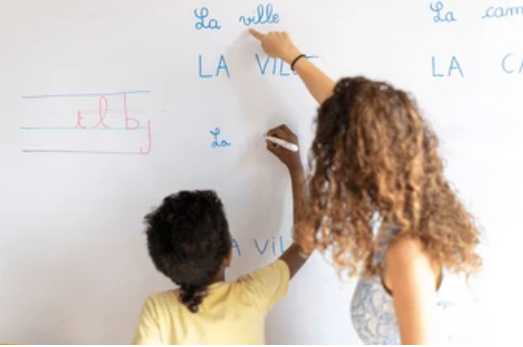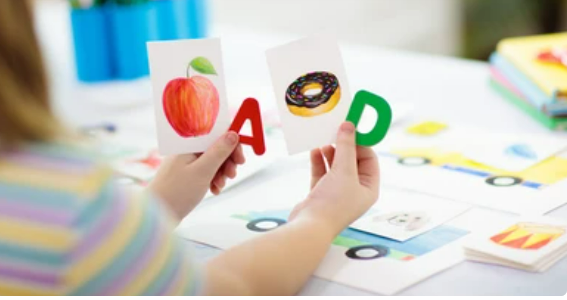Orthographic Mapping and Phonics
Orthographic Mapping and Phonics: Orthographic Mapping is a term that is gaining some traction and becoming increasingly recognized as an integral part of phonics instruction. Mapping increases the ease and speed with which students recognize words. Though the term itself may strike one as complex, the concept is straightforward and rooted in language learning.
Orthographic mapping should not be thought of as a skill and is not something that is specifically taught. Instead, orthographic mapping is a mental process. Phonemic awareness skills such as blending, segmenting and phoneme manipulation are taught so that alphabetic codes (graphemes) become increasingly automatic and thus enable orthographic mapping, or word storage in long-term memory, to take place.
The video below from the Measured Mum gives a lovely, brief overview of orthographic mapping.
David Kilpatrick (2015) reveals that orthographic mapping is “the mental process we use to permanently store words for immediate, effortless retrieval. It is the process we use to take an unfamiliar printed word and turn it into an immediately recognisable word”.
Orthographic mapping should not be considered to have a relationship with the balanced literacy notion of ‘sight words’. This is the dubious premise that words should be memorised as logographs, which means word shapes.
Orthographic mapping is a much different proposition. Mapping refers to the phoneme-grapheme structure of a given word that is ultimately embedded into long-term memory for rapid retrieval when prompted.

Think of orthographic mapping as a bridge between the speech sounds in words (phonemes) and their written representations (graphemes). Mapping builds connections between sound and letters that become strong, effortless, and increasingly automatic. This enhances your students' ability to rapidly and accurately retrieve words, boosting reading fluency.
Orthographic mapping aids students ability to recognize letter names and their corresponding speech sounds. This step forms the foundation of the sound-letter link while building phonemic awareness. This enables students to be better placed to segment words into individual sounds and blend them together again.
Orthographic Mapping and Phonics - Sound Manipulation
The next stage involves expand the phoneme-grapheme link with sound manipulation. Phoneme manipulation is a critically important skill when learning to decode words. Phoneme awareness skills such as student being able to identify the first sound in a word, change the final sound in a word, or insert a different vowel in the middle of a word all help orthographic knowledge and build children's mental lexicons.

With these emerging phonemic connections, students begin to store learnt words in their long-term memory. Recall of newly learnt words becomes increasingly effortless requiring minimal effort. Maximum speed becomes the norm. This process is known as rapid word retrieval. With synthetic phonics instruction the sounding out of a CVC word like 'c-a-t', soon becomes instantly recognizable as the word 'cat' - a whole unit. Reading becomes more fluent and less laborious easing the burden on the working memory system.
Understanding orthographic mapping can enhance phonics instruction. Incorporating it into daily lessons can help enrich your students' budding lexicons.
Decodable texts, additionally, are a valuable tool that can help to reinforce phoneme-grapheme links. Being able to automatically connect sounds to letters can also aid in spelling and writing, skills that should be taught alongside the learning of linking sounds to new graphemes.
Orthographic Mapping and Phonics - Blending and Segmenting
Segmenting and blending exercises should be at the centre of synthetic phonic lessons and classroom routines that are centred on building orthographic knowledge.
Synthetic phonics skills such as phoneme segmentation, blending, and manipulation aren’t just for early readers. They continue to be highly useful as students progress through the years and encounter more complicates and dense texts where multisyllabic and unfamiliar words and complex text passages become increasingly prevalent.

Older students can also be supported in developing their orthographic mapping skills. Lessons focusing on prefixes, suffixes, and root words can deepen students understanding of phoneme-grapheme associations and have proven successful in enabling students to decode complex and unfamiliar words.
Assessment is also an essential part of the process. Tracking each student's progress will help identify any difficulties in their phoneme-grapheme linkage. It ensures you can intervene early and adjust lessons as needed, setting each student up for success.
It's important to remind ourselves that the development of orthographic mapping skills is not a race. Children will progress at their own pace, and lessons tailored to meet the needs and abilities of every student should be designed in a properly constructed scope and sequence.
Orthographic Mapping and Phonics - Summary
Incorporating orthographic mapping skilfully into your teaching playbook is invaluable. It empowers students with the necessary skills to cement the phoneme-grapheme link, simultaneously enhancing reading fluency while building students' confidence to unlock the alphabetic code.
In conclusion, orthographic mapping in the realm of synthetic phonics instruction generates results and nurtures new readers guiding them to competence as successful readers.
Updated 11/2023
References:
Five from five: How we Learn Orthographic Mapping https://fivefromfive.com.au/phonics-teaching/essential-principles-of-systematic-and-explicit-phonics-instruction/how-we-learn-orthographic-mapping
Kilpatrick, D. (2015) Equipped for Reading Success, Casey and Kirsch Publishers
Moats, L. (2010) Speech to Print, Language Essentials for Teachers, Paul Brookes Publishing Company
The Measured Mum: The Science of Reading, Orthographic Mapping Explained, https://www.youtube.com/watch?v=vA05Oasiy4k&t=292s
